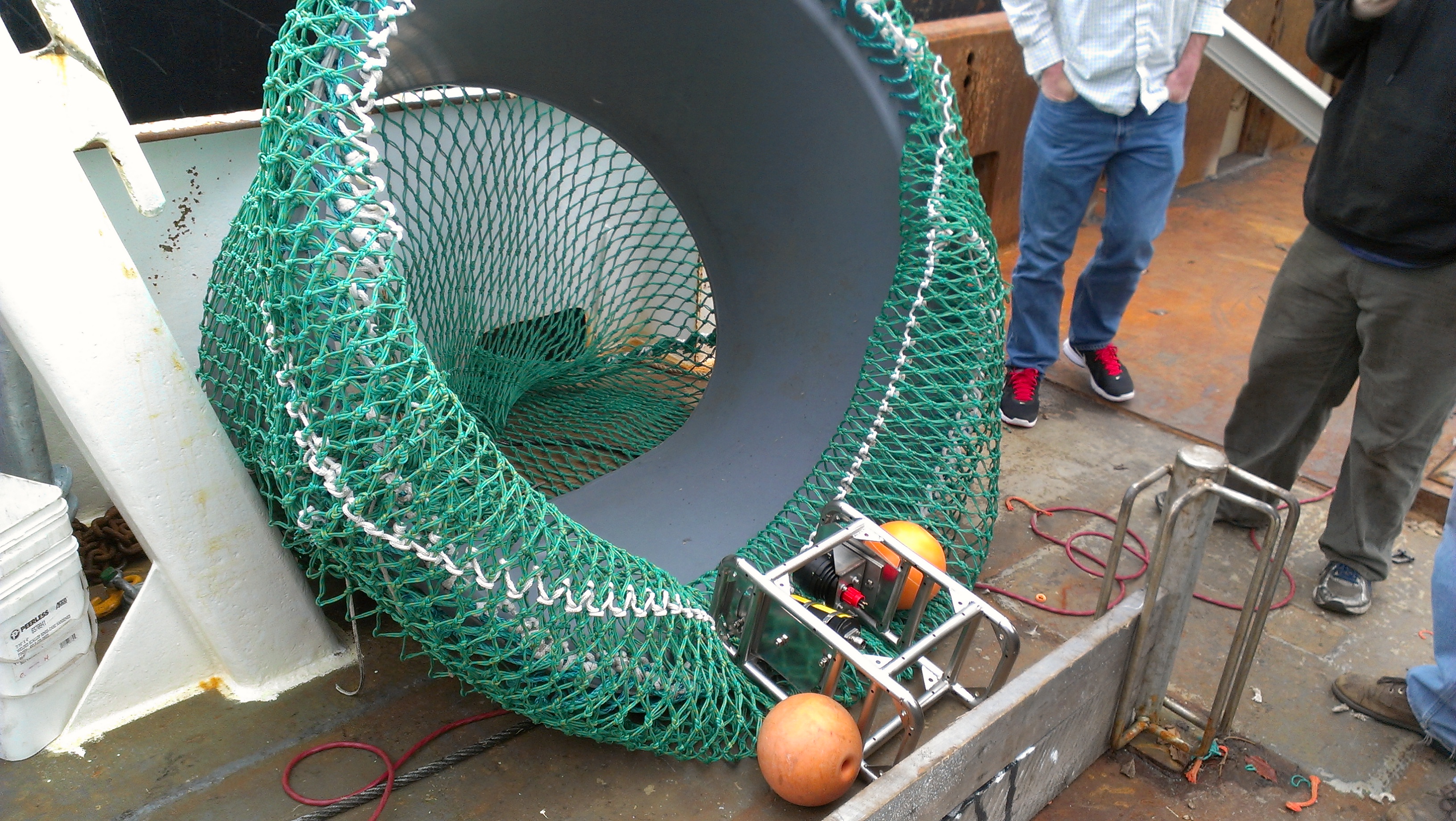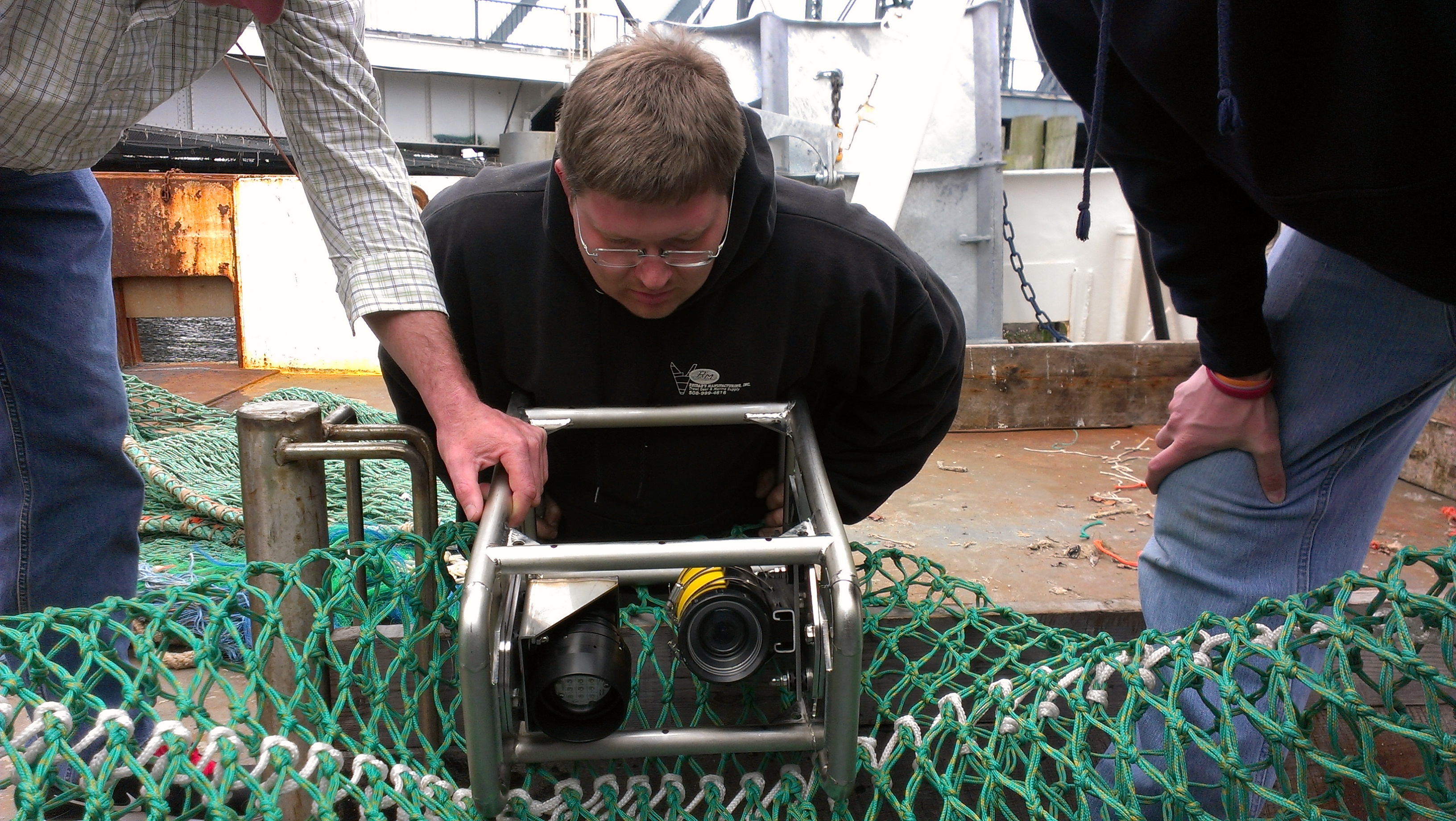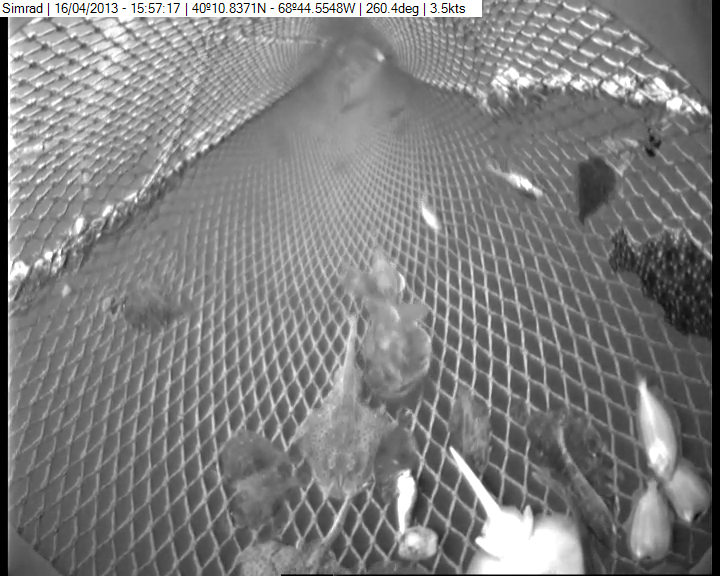Dr. Kevin Stokesbury of SMAST is working to improve groundfish and flat fish stock surveys using video data collection
Dr. Kevin Stokesbury, whose work in developing the SMAST Scallop Video Survey was essential to transforming scallop surveys in the 1990s, is collaborating again with the fishing industry, NOAA Fisheries, the Massachusetts Division of Marine Fisheries, SIMRAD, and his colleagues from the University of Massachusetts Dartmouth School for Marine Science and Technology (SMAST) to improve groundfish and flat fish stock surveys using video data collection. This new method shows promise to improve accuracy by increasing spatial coverage and to allow the conducting of surveys without fish mortality.
A recent test of the video technology on Atlantic yellowtail flounder showed potential to greatly increase data collection compared to conventional methods. The method uses a modified net that, instead of catching fish, funnels them through an  opening while video is shot by an attached underwater digital camera. This enables continuous, and thorough sampling for longer periods of time than a traditional collection survey.
opening while video is shot by an attached underwater digital camera. This enables continuous, and thorough sampling for longer periods of time than a traditional collection survey.
Image of the modified net and video camera taken aboard F/V Justice prior to the survey's departure. Photo courtesy of SMAST
Increasing data quantity lowers the margin of error and improves confidence in the assessment. Also, because the video survey greatly decreases fish mortality, it is particularly advantageous for surveying species with low allocations, like cod.
Following an article in the New Bedford Standard-Times about SMAST's survey, Dr. Bill Karp, the Science and Research Director of NOAA's Northeast Fisheries Science Center, sent a letter to the paper's editor congratulating Dr. Stokesbury "for demonstrating the potential for this [survey] approach here in New England." Dr. Karp also announced NOAA's commitment to joint research effort with SMAST and industry partners. "It is only through investment in these partnerships and building new collaborations that we can hope to be successful," he wrote.
 The survey has been supported by members of the groundfish and scallop industries, who provided equipment, funding, and time for the yellowtail survey. NOAA also cooperated by issuing the necessary permits and providing a scientist with similar technological experience to help conduct the survey. SIMRAD provided two technicians and the video camera system.
The survey has been supported by members of the groundfish and scallop industries, who provided equipment, funding, and time for the yellowtail survey. NOAA also cooperated by issuing the necessary permits and providing a scientist with similar technological experience to help conduct the survey. SIMRAD provided two technicians and the video camera system.
Net maker, Tor Bendiksen of Reidar's Manufacturing,
helping attach the camera onto the net.
Photo courtesy of SMAST.
In a meeting on Wednesday, May 1st, with project contributors, Dr. Stokesbury's presentation of the preliminary survey results was met with a positive response, and the group expressed enthusiasm for the continued development of this technology. Dr. Brian Rothschild, dean emeritus of SMAST, praised the new survey method, calling it "a spectacular way forward."
Danny Elerston, who contributed the use of his boat for the survey, said the results exceeded his expectations. "What we are getting back out of it is a lot more information," he said. "We have so much to learn…we have to know what is out there."

Footage from the SMAST survey digital camera showing flat fish passing through the modified net.
May also marked the beginning of hard-hitting groundfish allocation cuts that are expected to take a serious toll on the commercial fishing industry. Recently members of the industry and scientific community have expressed doubt in the accuracy of current stock assessments. Many of the survey procedures have not been updated since the early 1960s. Along with more advanced technology, Dr. Stokesbury is incorporating "what fishermen know" into his changes as industry input was vital for his transformative scallop video surveys.
In the 1990s, similar video technology for scallop surveys became instrumental to the success of the scallop industry, as the footage they provided helped verify claims by fishermen of areas with an abundance of scallops that NOAA surveys had missed.
Read Dr. Bill Karp's Letter to the Editor of the Standard-Times
Read the New Bedford Standard-Times article "Watch Out NOAA: SMAST is Innovating Again"
